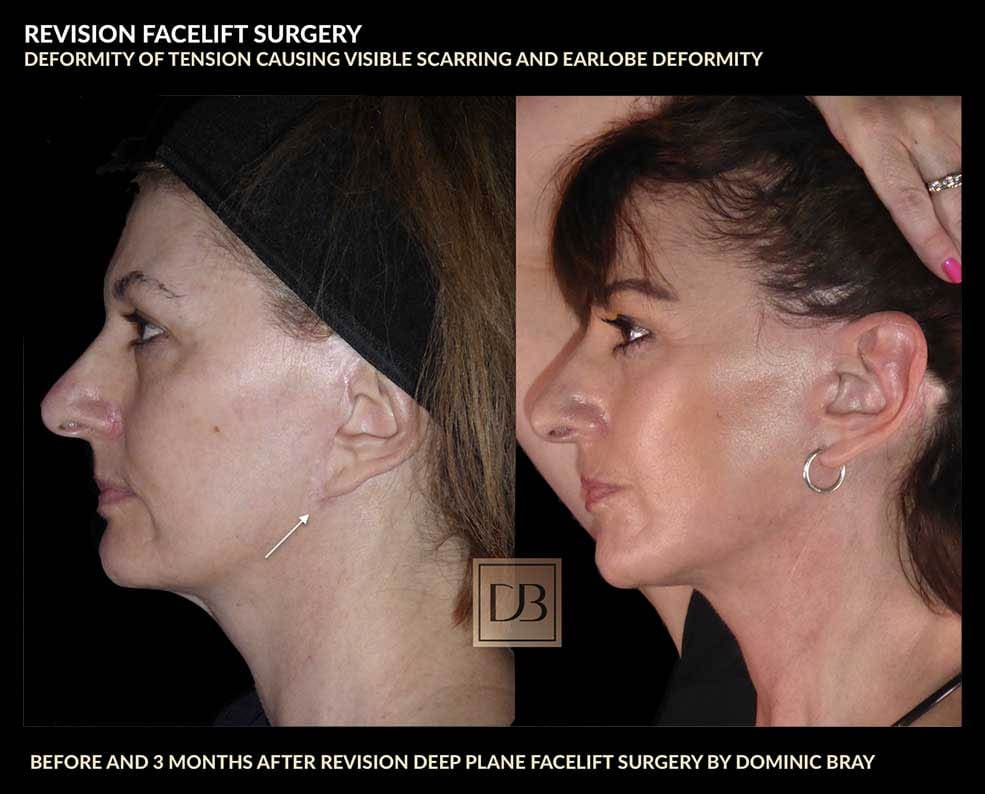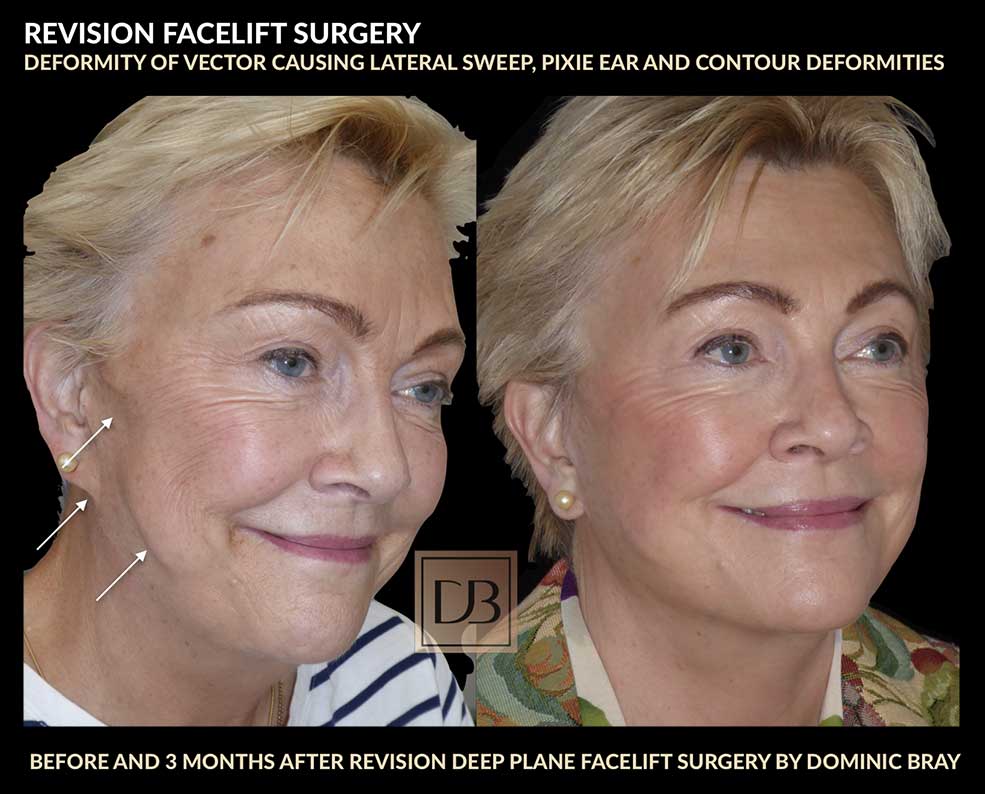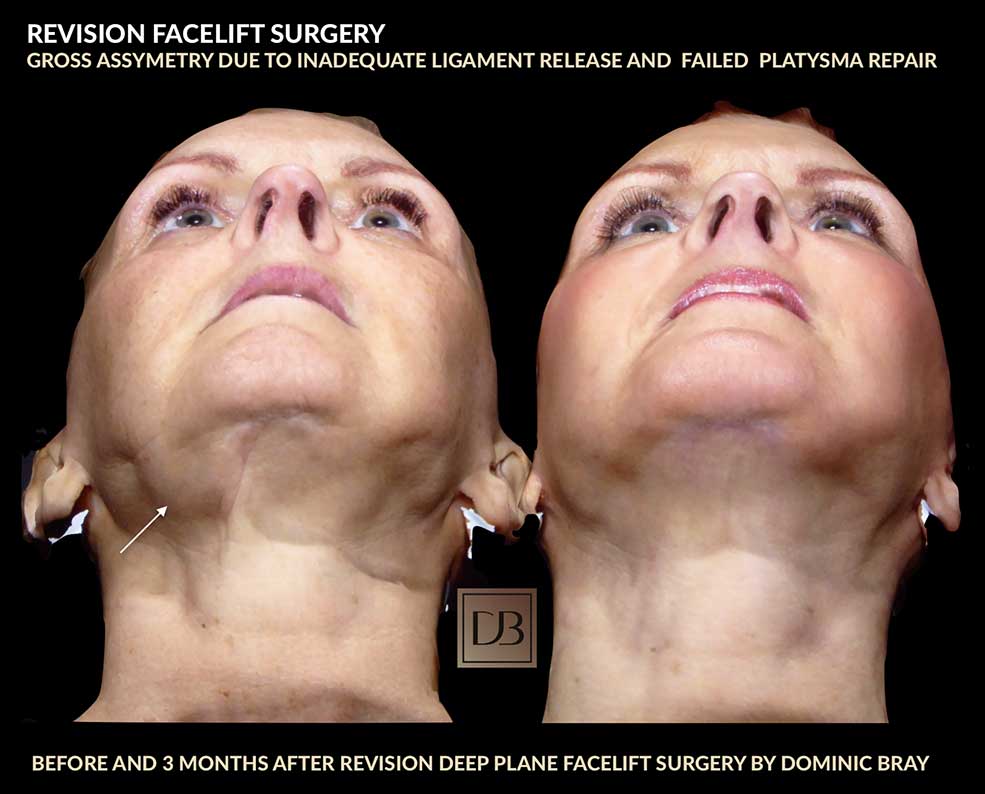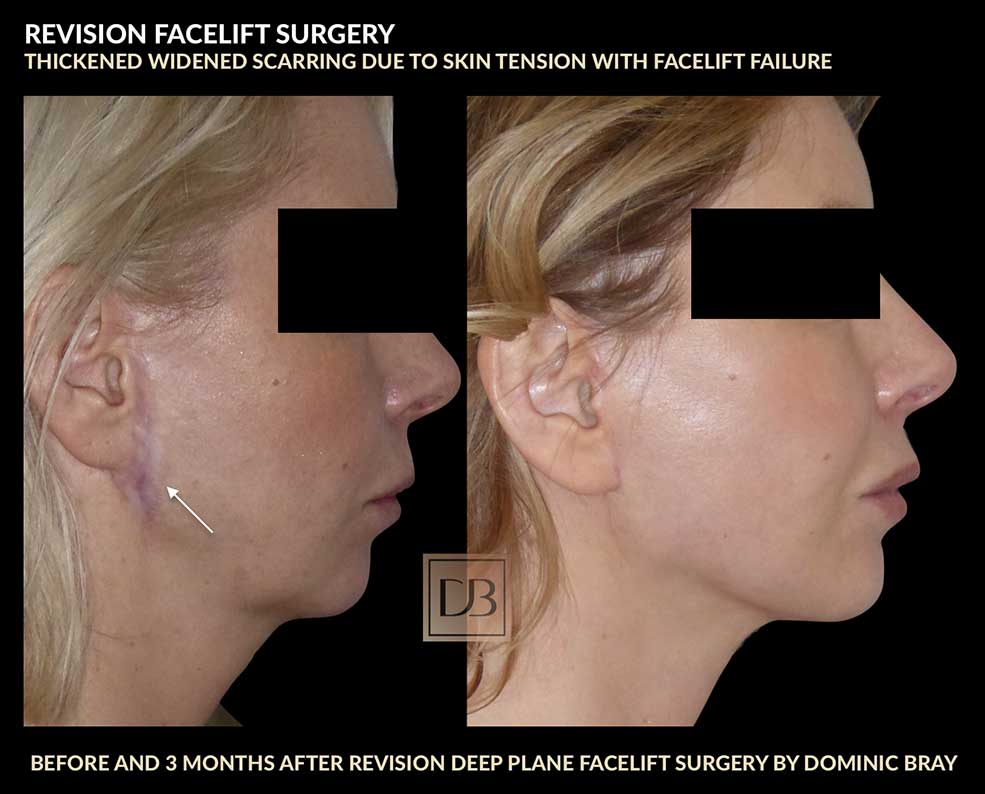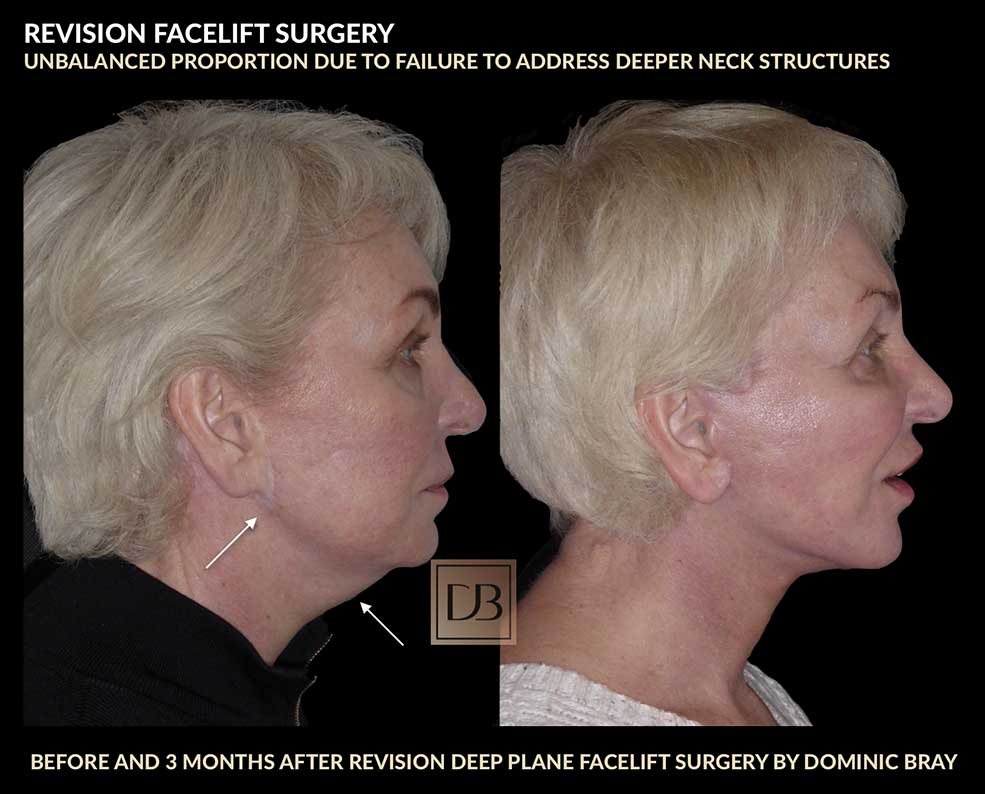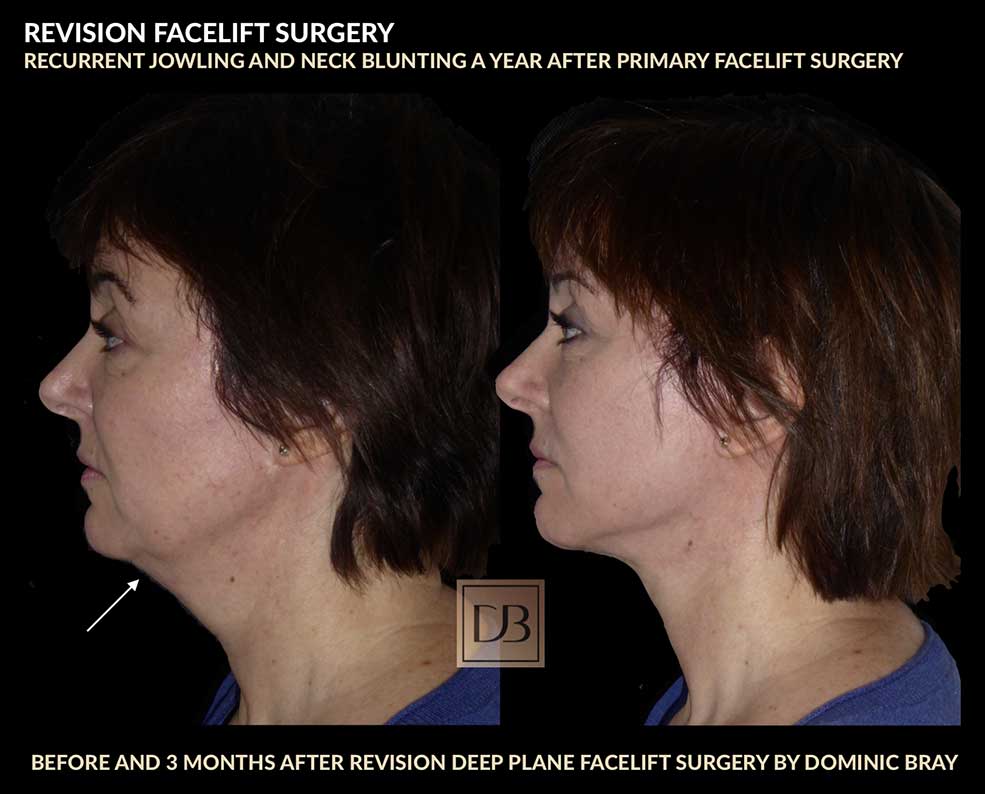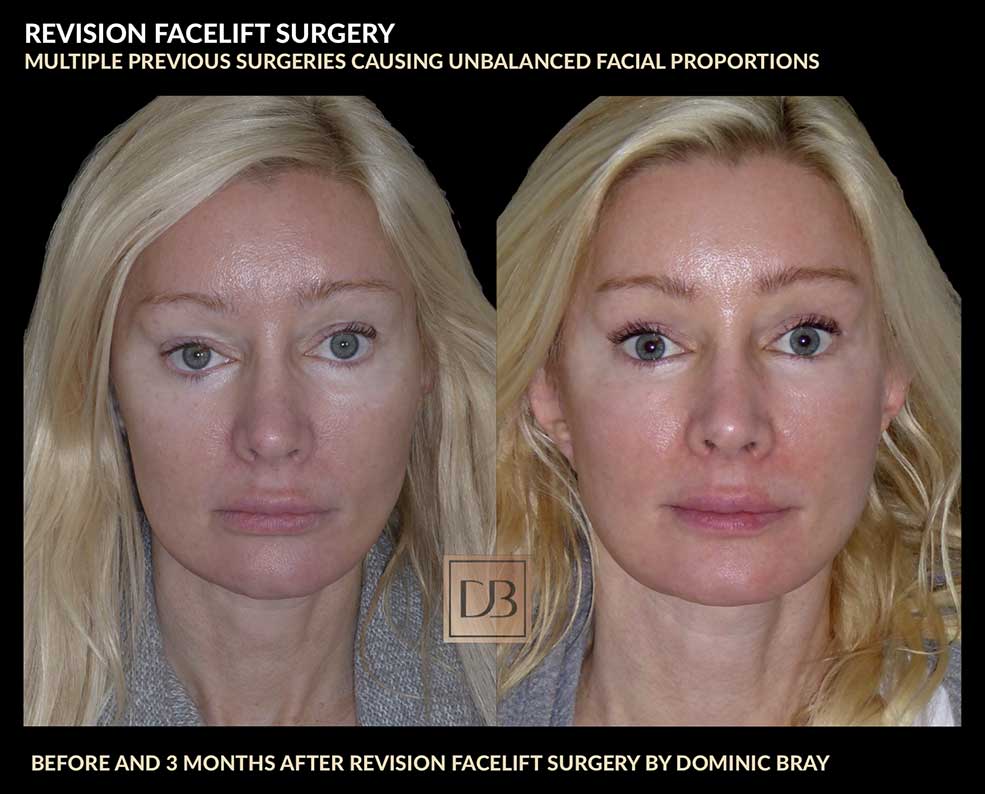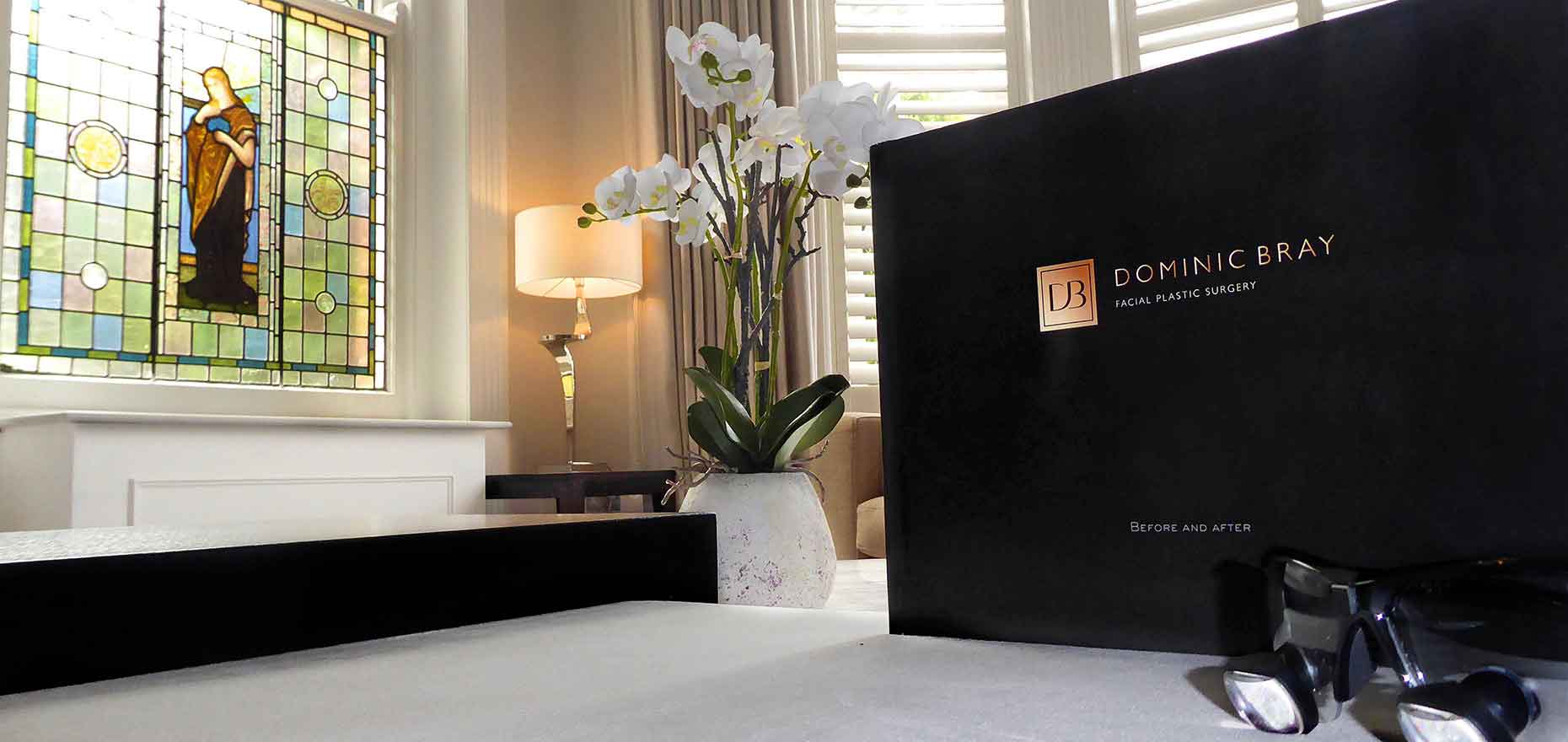Revision Facelift
If a facelift doesn’t go to plan, patients might seek a revision. As a specialist facelift practice, we revise facelifts from all over the world, on average one revision facelift a week or 50 a year.
Revision facelifting is technically more challenging for the surgeon and carries a greater degree of worry for the patient whose confidence in facelift surgery is already dented. On this page I hope to explain the technical reasons why some facelifts need revision and the common historical themes I’ve seen in those patients.
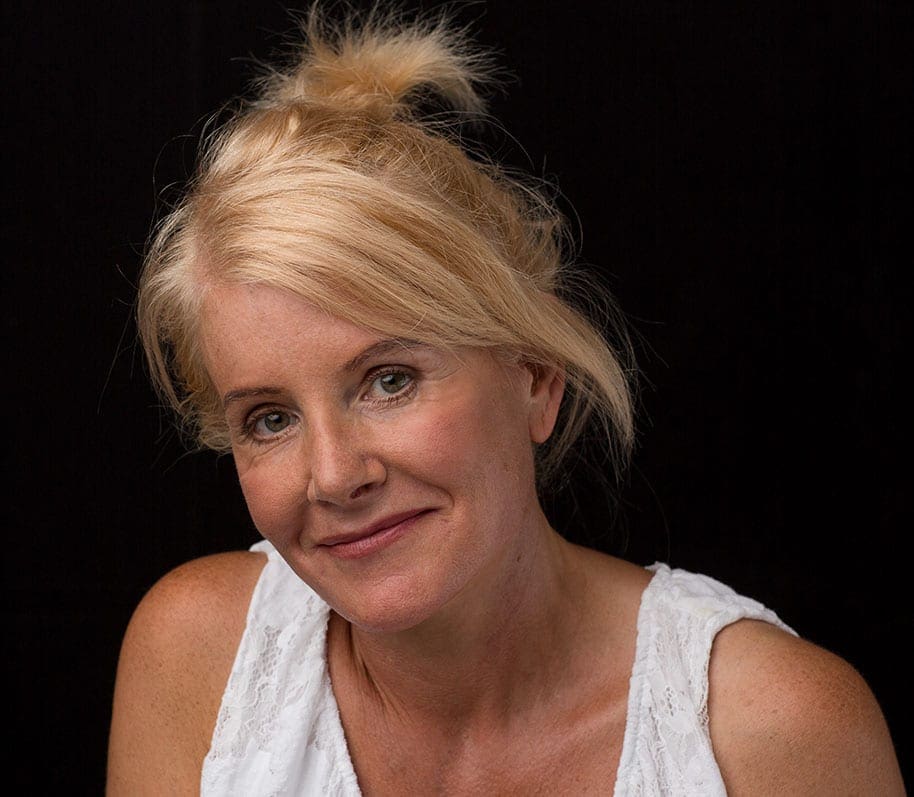

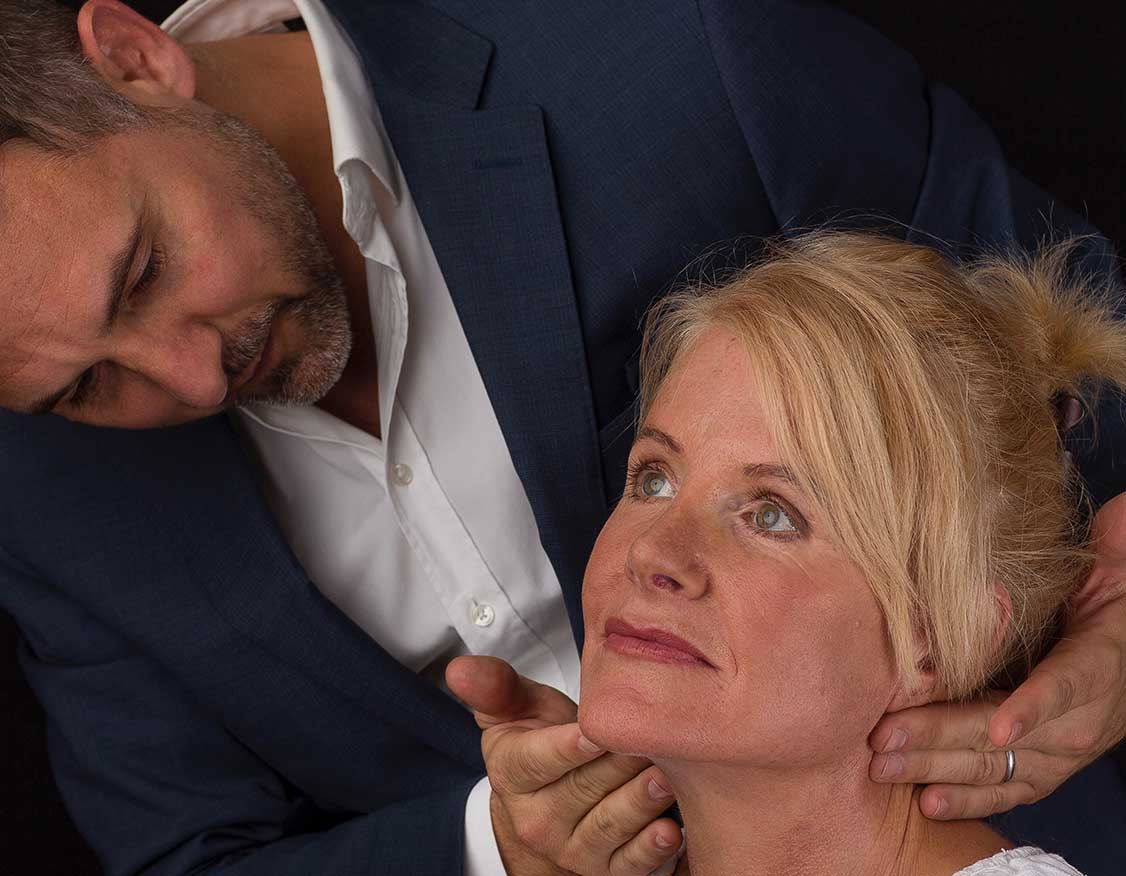
Why Patients Seek Revision Facelifts
Facelift surgery is surgery for confidence and peace of mind. Having plucked up the courage to undergo the procedure and recovery, occasionally patients feel little improvement in confidence or appearance or worse have the dreaded tell tale signs of surgery or deformity.
I am often asked to comment negatively on patients prior results when they seek my advice but it is my policy to look forwards not backwards and do what I can to help. No surgeon wants to displease their patients and every surgeon wants to improve their own poor result if they can so it is always best to maintain dialogue and follow up with your primary surgeon before seeking a second opinion. Only when your trust is affected or he or she feels he can do no more should you seek secondary help.
The following issues might occur alone but more commonly occur in combination
DEFORMITY OF TENSION
As I discuss in depth in the Considering Facelift Surgery section, the skin is merely a passenger as deeper tissues are lifted.
Skin tension deformities after facelifts always manifest at the scar line as widened and thickened scars. Other signs include earlobe distortion and lengthening known as pixie ear deformity and loss of tragal cartilage definition.
DEFORMITY OF VECTOR
Vector or direction of lift is key to achieving a natural balanced facelift result as I discuss in the Science of Beauty section.
When the direction of lift is backwards not upwards faces can look windswept and tight in the mid-face. If deeper ligaments remain unreleased a bulging lateral sweep deformity is created which is worse on animation or smiling.
POOR PLANNING
Careful planning of a face and neck lift incision is essential to preserve the hairline in front of the ear and behind.
A scar that runs vertically into the hair in front of the ear limits vertical vector lift and risks amputation of the temporal tuft of hair (sideburn). A neck lift scar that goes straight back in the hairline can leave an unsightly triangular notch.
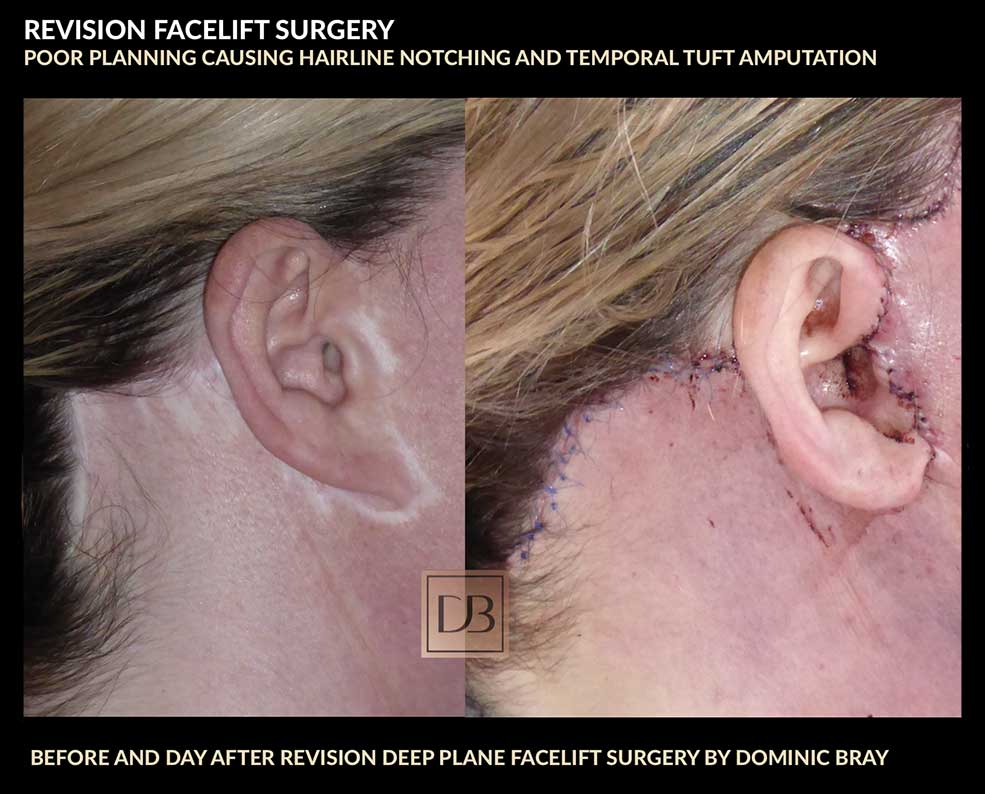
GROSS ASYMMETRY
Asymmetry might occur due to aggressive central neck fat reduction alone without deeper structure intervention leading to cobra-neck deformity or inadequate deeper ligament release might lead to early recurrence.
SCARRING
Any tension on the skin will lead to widened, thicker scarring. The skin is a cover structure only and should play no supportive role in a facelift.
This patient, who I revised bears the scars of surgery without any change in the neck or jowl from her primary surgery.
UNBALANCED
The face and neck should always be addressed together. A lifted face and un-contoured neck will make the face look as unbalanced as a tighter neck with jowls.
SHORT LASTING
If a mini lift has been performed in a face which needs a more extensive facelift, the result will be short lasting.
As I discuss in the Secrets of Skin care, skin is constantly renewing so a little relaxation of skin is expected but if the deeper structures aren’t properly addressed patients will seek a revision.
MULTIPLE FACIAL SURGERIES
Multiple consecutive facial procedures might ruin natural facial balance and proportion.
If these are performed by different surgeons the face risks becoming unrecognisable. Correcting all concerns simultaneously is often better for balance
When is the right time to undergo revision facelift?
We have to consider facial skin health and underlying tissue plane disruption and scarring when deciding upon revision surgery. Generally a year after surgery these conditions become favourable.
We have also to consider many other variables such as previous lift dynamics, as lifting requires some mobility of the deeper tissue planes and skin reserve to revise previous scars. Often primary surgery has used all of this reserve which prolongs the wait to proceed safely with a revision facelift.

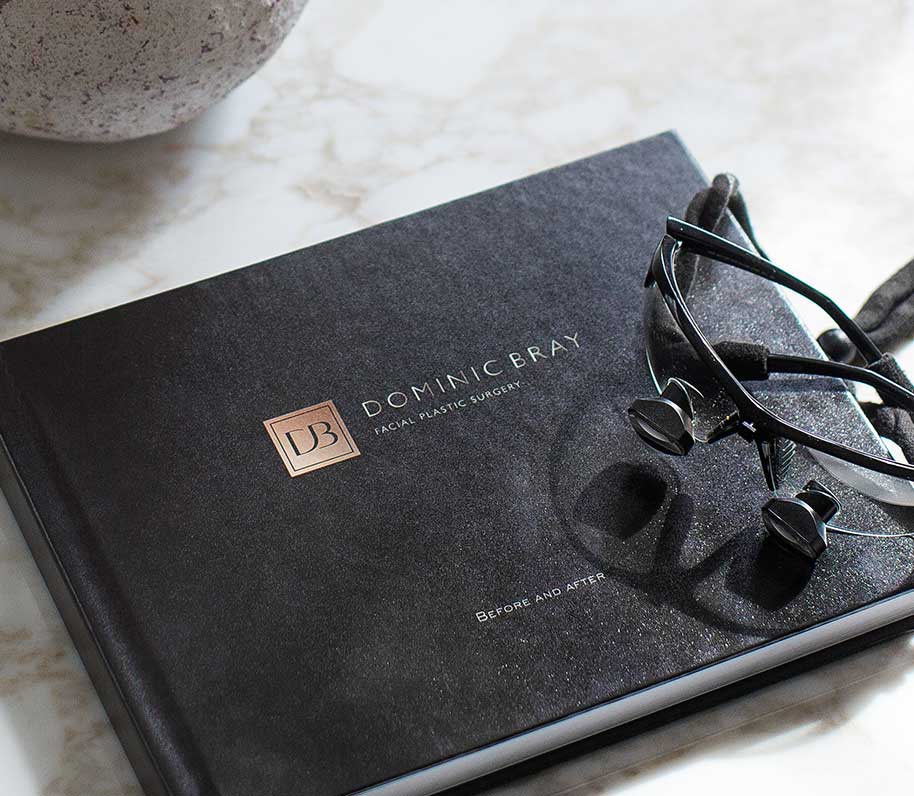
TRENDS OBSERVED IN REVISION FACELIFTS
Facelift surgery is a fine art and issues might arise even in a beautifully performed facelift by an experienced facelift surgeon.
But when one is focused solely on facelift revision surgery a picture emerges of common themes in those patients seeking revision.
COST SHOPPING LEADS TO FACELIFT REVISIONS
A facelift seems like good value. Is it really? It might be cheap but there is a real risk of throwing bad money before good when revision facelift costs are included.
Discounted rates, specials and offers are there to fill an empty operating diary. Do you want your face on that table?
MINILIFTS
Quick recovery mini-lifts are an easy sell and very attractive to busy patients. In reality, very few faces are appropriate for mini-lifts, we perform about 5 a year.
A face is either aged and needs a full facelift or it isn’t and doesn’t need surgery at all. Question any trademarked lift, what is the actual lift and what is a trademark for if it’s not trying to sell you surgery?
ONE PROCEDURE NOT ALL
As in the unbalanced section above, if a face needed more procedures than were performed the surgery won’t look right and revising the facelift may be necessary.
Upper eyelid surgery often needs simultaneous brow-lifting, a face and neck should always be done together. If upper eyelids are done alone how will the lower eyelids look afterwards. It is better to save for the surgery actually needed than have the surgery wanted.
NON SPECIALIST FACELIFT SURGEONS
Like everything in life, expertise is borne of thousands of hours of focussed experience and dedication.
Anything that dilutes that experience compromises it and there is a risk of being a jack or all trades and master of none. The recently reported 2019 figures indicate an average of 5 facelifts a year for a general plastic surgeon, how many does your surgeon do? Don’t be afraid to ask – less than 100 per year and current expertise is questionable which may lead to needing a revision facelift later.

The “Not Happy” Patient
I meet patients consulting me for revision facelifts that have had a nice result performed well elsewhere that aren’t happy with it.
I have my own, thankfully very rare, patients in this category and it’s tricky. I tell all of my patients before surgery that results are variable, we are operating on live tissue which continues to age and change and no guarantees can be made with any surgery. Surgery has limitations and risk, anatomy varies between patients and genetic and external factors all contribute to the final result. Trying to set clear expectations of what might and might not be achieved is result important from the outset.
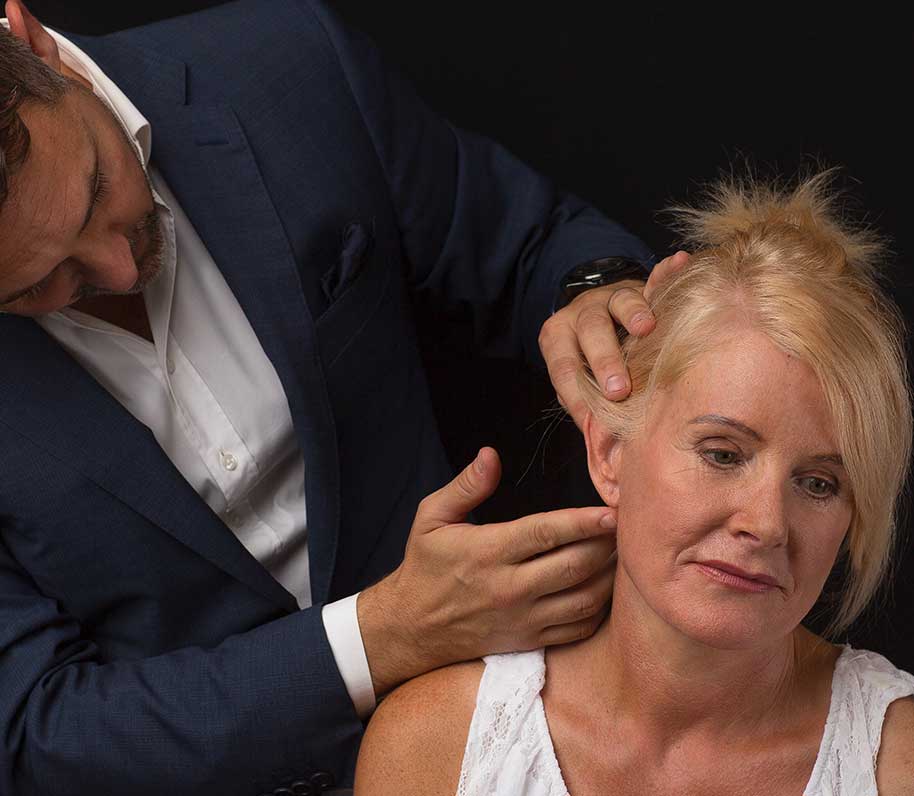


Considering
Facelift Surgery?
The definitive guide to anyone considering facelift and neck lift surgery at our London or Tunbridge Wells locations. Essential research for potential patients.
Read this first